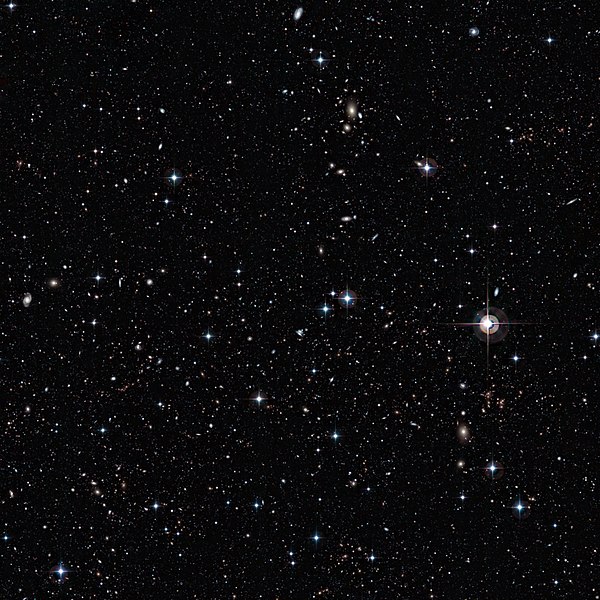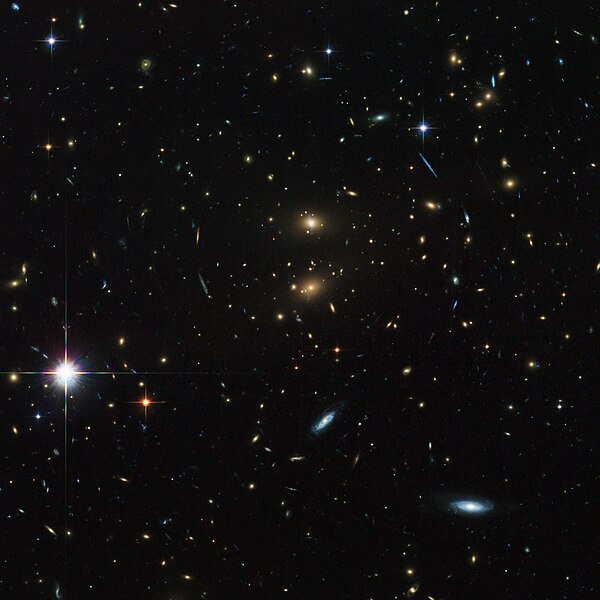Galaxy groups and clusters
Galaxy groups and clusters are the largest known gravitationally bound objects to have arisen thus far in the process of cosmic structure formation. They form the densest part of the large-scale structure of the Universe. In models for the gravitational formation of structure with cold dark matter, the smallest structures collapse first and eventually build the largest structures, clusters of galaxies. Clusters are then formed relatively recently between 10 billion years ago and now. Groups and clusters may contain ten to thousands of individual galaxies. The clusters themselves are often associated with larger, non-gravitationally bound, groups called superclusters.
MACS J0152.5-2852 is a massive galaxy cluster. Almost every pixel seen in the image is a galaxy, each containing billions of stars.
Rich scattering of galaxies was captured by the MPG/ESO telescope.
Galaxy cluster ACO 3341 seen by VLT's VIMOS
Galaxy Cluster LCDCS-0829 acting like a giant magnifying glass. This strange effect is called gravitational lensing.
A supercluster is a large group of smaller galaxy clusters or galaxy groups; they are among the largest known structures in the universe. The Milky Way is part of the Local Group galaxy group, which in turn is part of the Virgo Supercluster, which is part of the Laniakea Supercluster, which is part of the Pisces–Cetus Supercluster Complex. The large size and low density of superclusters means that they, unlike clusters, expand with the Hubble expansion. The number of superclusters in the observable universe is estimated to be 10 million.
The Abell 901/902 supercluster is located a little over two billion light-years from Earth.





